When forced to leave their homes in search of safer locations, what choice do people have? Some of the options are other villages or cities where fresh shelter and a new job can be found but, for various reasons, this is not always an immediate option for hundreds of thousands of refugees. In search of a temporary safe haven, refugees are accommodated at temporary settlements called refugee camps.
According to UN estimates, one-fifth of the world’s refugees, i.e., approximately 6.6 million people, live in refugee camps. We were unable to identify an exact number of camps in the world given the complicated process of tracking refugees and their movements. However, assuming that an average refugee camp houses 11,500 people at a time, there are at least 500 refugee camps in the world.
What is a refugee camp?
Refugee camps are temporary facilities created to house and assist people who have been forced to leave their homes due to different types of violence they faced. The camps are not intended to offer long-term solutions but they provide people with food, water, medical care, and other vital services. According to UNHCR, on average, refugees stay between 10 and 15 years at a refugee camp but the duration can differ greatly depending on a number of variables, including the reason for displacement and the extent of conflict in the area.
The latest available data from May 2024 shows that over 120 million people globally have been forced to relocate due to persecution, violence, war, or human rights abuse:
- 43.4 million refugees
- 63.3 million internally displaced people (IDP)
- 6.9 million asylum seekers
- 5.8 million individuals requiring international protection.
The UN High Commissioner for Refugees lists the following five refugee camps as the biggest on the planet:
5. Um Rakuba in Sudan
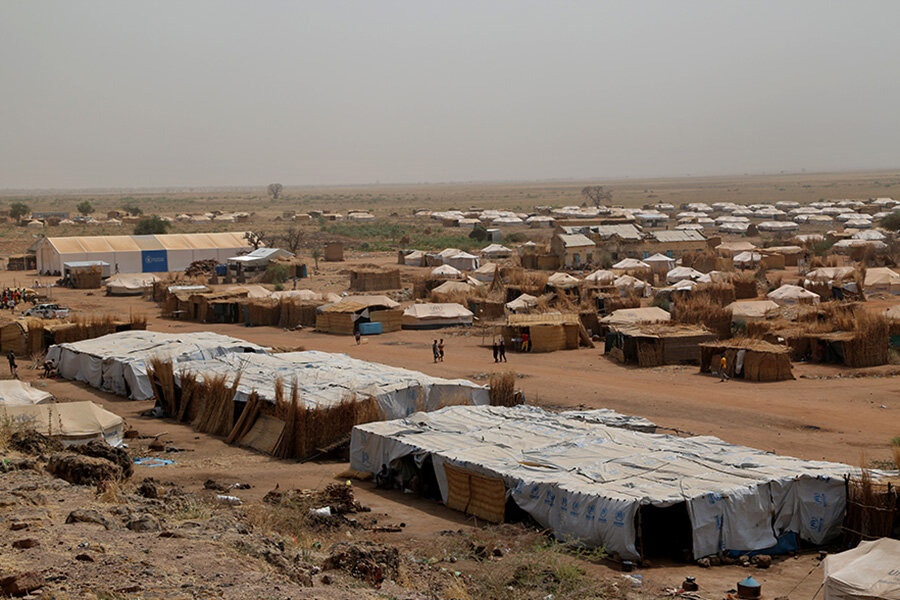
This camp is among the many set up at the end of 2020 with the help of UNHCR with the goal of addressing the escalating problem in Ethiopia’s Tigray area, situated almost 300 km away.
Due to violent conflict in the area, thousands of people were forced to flee and settle in neighboring Sudan. When the conflict first began, around 60,000 people fled the country and now hundreds continue to enter Sudan daily. Currently, Sudan houses over 1.1 million refugees and this camp itself is home to over 16,000 refugees.
About a third of the 1.1 million refugees in this camp are children and 25% are women. Establishing a safe and nurturing environment for children is a top priority for the development community with organizations like the Norwegian Refugee Council, Islamic Relief Worldwide, and Save The Children International making significant contributions towards this goal.
Besides Ethiopian refugees, the camp has taken in refugees from several Sudanese regions: Khartoum, Al Jazirah, and other regions after the start of the conflict in that country in April 2023.
According to the residents, the camp has improved and today features well-functioning drainage systems, solar lighting, and speed bumps which have considerably reduced the number of traffic accidents. In addition, the cleaning campaigns have improved the environment.
At the beginning of 2024, around 17,300 refugees, including those who have been secondarily displaced, were housed in the camp with everyone being biometrically registered and receiving support.
4. Za’atari in Jordan
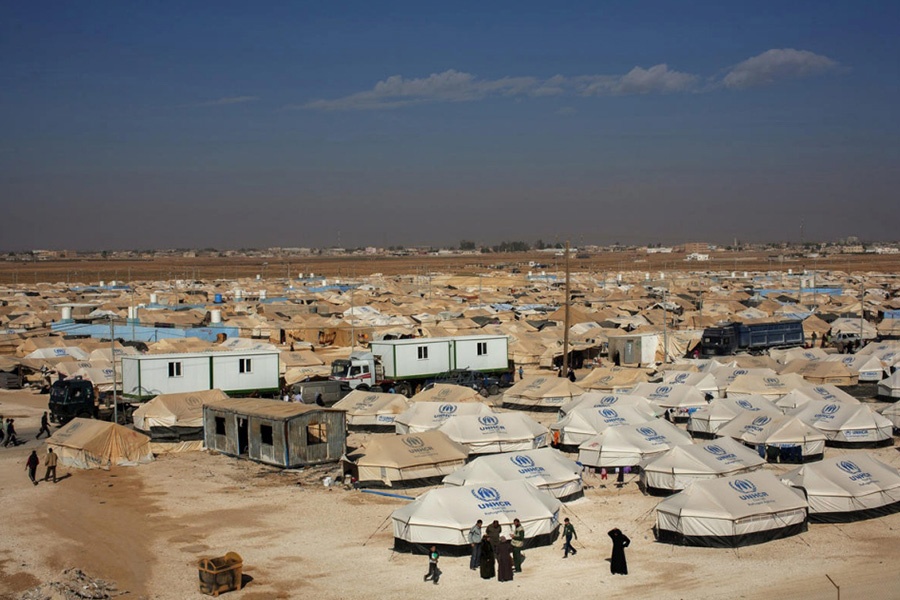
Located 10 km away from Al-Mafraq, this camp was established on July 28, 2012, and is now populated by 78,000 Syrian refugees, symbolizing the ongoing Syrian refugee crisis. The UN Refugee Agency, UNHCR, and the Syrian Refugee Affairs Directorate jointly oversee the Zaatari camp with UNHCR managing all camp operations and services.
Since Jordan is the world’s second-least water-rich country, water is one of the most valuable resources there. Despite the fact that all structures in the camp are connected to a water source, about a third of all homes claim the water supply is insufficient to meet all their demands.
In 2017, a solar power plant was set up to provide access to electricity and currently, camp residents have access to electricity for 9 hours per day. In addition, the camp has some of the most essential facilities such as primary health clinics.
Today, over 30 international organizations operate in the camp. People can benefit from medical facilities, improved shelters, healthcare centers for pregnant women, schools and even a market with over 1,800 shops.
The Zaatari Office of Employment helps camp inhabitants with work authorization, posts job openings, and offers work-related counseling services. There are about 22,600 children engaged in formal education in the camp.
3. Kakuma in Kenya
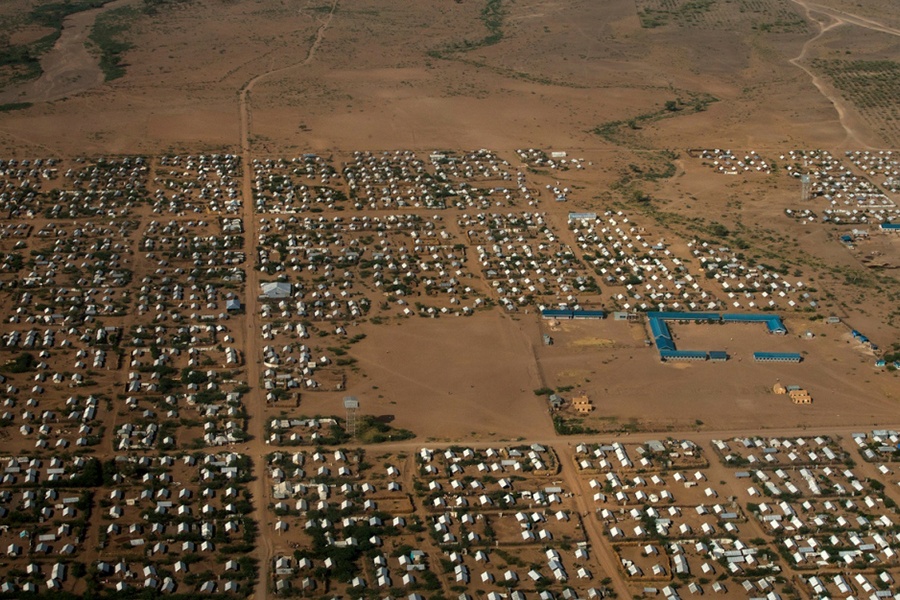
This camp in Kenya’s Northwestern area was set up in 1992 with the capacity to house 90,000 people. Today, it is home to refugees from a number of nations, including Rwanda, Burundi, Ethiopia, South Sudan, Somalia, and the Democratic Republic of the Congo.
As of September 2023, there were over 654,000 refugees in Kenya with around 284,000 of them residing in the Kakuma camp.
Due to this overcrowding, essential commodities such as food, safe drinking water, and medications are becoming scarce in Kakuma which has stressed the local infrastructure and resources.
According to the International Water Management Institute (IWMI), insufficient dietary variety in the available food has caused undernutrition and anemia in settlement communities. However, numerous organizations such as the IWMI and World Agroforestry are working to solve the issue. Moreover, people in the camp receive seeds and learn to garden and also use solar power to pump water from boreholes to use on crops.
2. Dadaab complex of 3 camps in Kenya
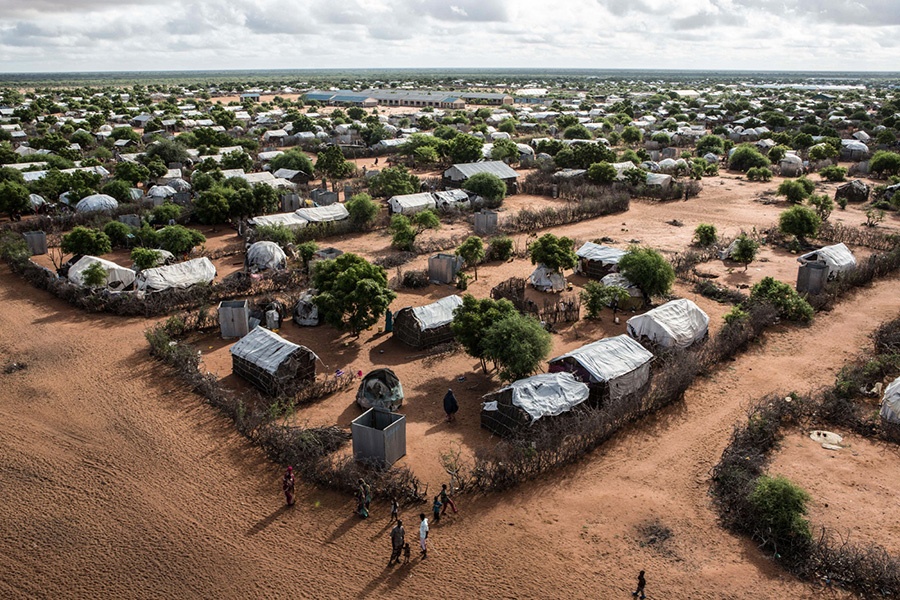
Located in Kenya’s Garissa County, almost 725 km away from the Kakuma refugee camp, the Dadaab refugee complex is composed of three smaller camps – Hagadera, Dagahaley, and Ifo.
Over 110,000 Somalis have entered Kenya’s Dadaab camps over the last few years. The latest data shows that over 320,000 refugees are housed in the three camps that make up the complex – Dagahaley, Ifo, and Hagadera.
Most of these refugees fled Somalia as a result of the civil conflict in 1991, while others sought shelter due to the catastrophic drought and hunger that occurred in that country 20 years later.
People can benefit from a range of facilities, including latrines, boreholes, tap stands, educational, medical, recreational, and security facilities, as well as markets and financial organizations. However, with more people being introduced to the already crowded camps, access to essential facilities will consequently continue to be limited.
At the end of 2023, it was reported that during that year one of the three camps – Dagahaley – had experienced a prolonged cholera outbreak, a measles pandemic, and an enormous spike in malnutrition due to heavy rains that led to floods.
Half of Dadaab’s population lacked access to functional bathrooms even before the rainfall which resulted in open defecation within and outside the camps.
The UN and its partners are struggling to provide much-needed assistance including water, food, health care, and other vital services to the most vulnerable, including children, who are among the hardest hit.
1. Kutupalong in Bangladesh
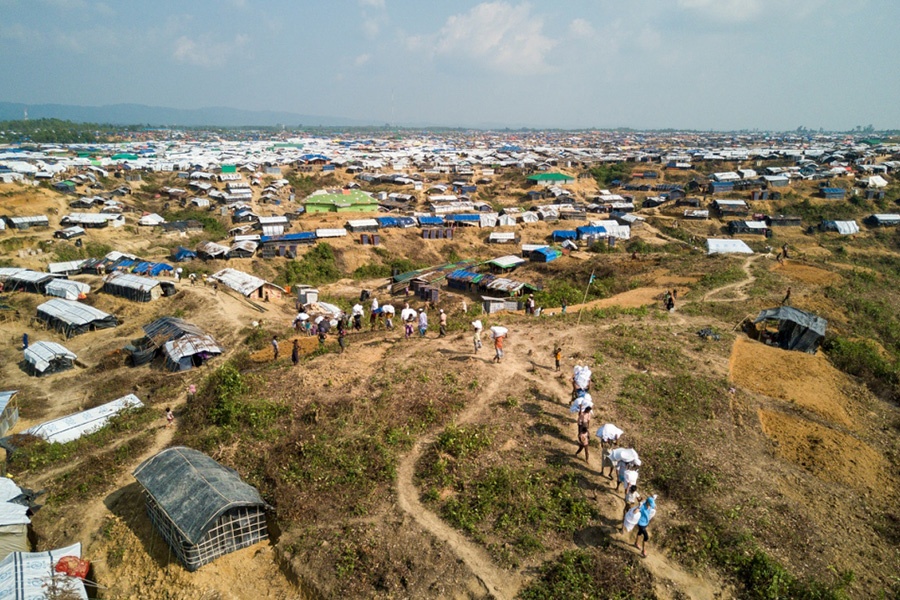
The largest camp for refugees in the world, Kutupalong, is situated in Ukhia – an administrative division of the Cox’s Bazar district in the division of Chittagong, Bangladesh.
Since 2017, nearly 1.2 million Rohingya Muslims – a stateless ethnic group residing in Myanmar – had to leave their homes due to armed assaults in Rakhine State. Many ran away to Bangladesh and found shelter in Kutupalong.
Taking into account the surrounding camps (there are 33 camps in Cox’s Bazar), which are sometimes referred to as Kutupalong, the total number of people in the Kutupalong refugee camp is approximately 931,000, making it currently the biggest in the world.
The vast, landslide-prone network of camps occupies a small area of roughly 24 square kilometers. About 200,000 families live in improvised tents using polytarp and bamboo shelters which are useless against floods and landslides.
Urban planning issues
In Kutupalong, Rohingya refugees encounter a variety of difficulties, with monsoons ranking as one of the most significant bringing extensive flooding that destroys numerous shelters. Refugees live in low-rise homes situated on a floodplain that is stuck in the mud.
Public services including hospitals and schools are not accessible. Since there are no emergency services at all, fires often destroy homes along with everything in their path.
The Bangladeshi government has attempted to address the Kutupalong urban planning problem for many years, but the ongoing influx of immigrants makes this almost impossible.
Available facilities
Given the camp’s rapid expansion, the destruction caused by fires and flooding, and the continued service activities of humanitarian organizations, the number of schools, hospitals, and other amenities in operation can fluctuate.
In addition, the UNHCR has established traveling medical teams to assist the refugees. The camp also features water and sanitary facilities and food distribution centers.
The future of the camp
The 2020 Camp 4 Extension (one of the camp’s sectors) can be viewed as a sustainable solution for a better future for the camp. A small group of people worked on this to design plans that will build a safer city. The first dwellings are of different heights and constructed from steel and bamboo which makes them safer while also being more compact to avoid overcrowding.
Human Rights Watch reports that just under a third of the US$ 876 million in requested donor aid has been received for the 2023 UN Joint Response Plan for the Rohingya humanitarian catastrophe. The result of this has been a rise in disease, hunger, and despair among refugees as the World Food Program has reduced the supply of food for Rohingya by a third.
The only way out, according to Bangladeshi officials, is for the Rohingya to return home – a scenario that will only be accepted by the refugees if a number of rights are ensured, including safety, access to land, and freedom of movement
Final word
Millions of people around the globe are forced to leave their dwellings due to never-ending conflicts. Nearly one-fifth of these have no other option but to reside in refugee camps, temporary structures created to address particular emergencies. However, for many refugees, these camps remain their home for years or even decades.

